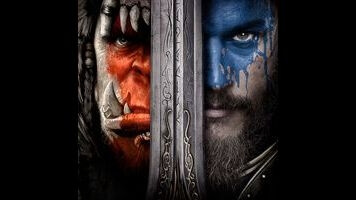Definitively establishing that “state-of-the-art” and “chintzy” are not mutually exclusive qualities, Warcraft is a perplexing multiplex boondoggle: Rarely is so much time, money, and cutting-edge technology expended on a spectacle so devoid of wonder. Instead of immersing viewers in its magical realm, as most great fantasies do, this adaptation of Blizzard’s wildly popular game series keeps them at an alienating remove. Great effort has been taken to assure that we can see every vertebrate of a dead animal worn like body armor, but none seems to have been applied to making the characters come alive, the environments seem defined, or the special effects look convincing. The film borrows names, concepts, and even specific locations from its source material, all while managing to shrink a limitless multiplayer sandbox—the online kingdom subscribers have been exploring for a dozen years now—into a kind of generic, unplayable story mode. It’s massive only in budget and miscalculation.
True to its roots, and in line with the pick-a-side trend in this year’s blockbuster class, Warcraft divides its sympathies. Half the cast of characters—a term to be used loosely when referring to these glowering NPCs—belongs to a species of world-jumping conquerors, searching for a new home to replace their dying one. Sporting fashionably braided hair and pierced tusks, the hulking orcs are basically Klingons on steroids—they have codes of honor, raise their young to be warriors, etc. Of course, they’re really just unconvincing masses of ones and zeroes; even the magic of motion-capture can’t make these macho beasts look real, exactly. This becomes a problem when we’re meant to be bonding with blandly brooding orc chieftain—and nervous new father—Durotan (Toby Kebbell), who suspects that the power-hungry shaman he answers to may be poisoning every land they claim with his black magic.
The humans, playing defense against these invaders, are more distinguishable but no more interesting than their marauding counterparts. One-dimensional archetypes abound, from the rakish commander (Travis Fimmel) to the noble king (Dominic Cooper) to a nerdy, bookish mage in training (Ben Schnetzer). Ben Foster, cast in the Merlin role (but dressed and groomed more like Jesus), spends most of the film pretending to summon and hurl clouds of gaseous green energy. (His magic mojo comes from some intangible fuel cell called The Fell, which is basically The Force if it corrupted as surely as the one true ring.) It’s not the most dignified use of a terrific actor, though Foster fares much better than Paula Patton, taking the Zoe Saldana career path of slathering herself in a primary color to play an inhuman warrior princess—in this case, the probable offspring of an orc and human fling. The film can’t even make her fanged underbite look natural, let alone settle on a consistent forced-perspective scale.
To watch Warcraft is never to be transported, but to wade through a thick morass of mythology, exposition, gaudy light-show effects, half-assed character development, and formulaic franchise groundwork. It’s bad news for fans of the game, much worse news for director/cowriter Duncan Jones (Moon, Source Code), a talented sci-fi fabulist who’s fallen screaming into the same CGI abyss that consumed Peter Jackson during his unfortunate Hobbit cycle. The film builds, perhaps inevitably, to one of those tiresome clashes of digital armies, as two waves of fuzzy soldiers crash into each other. In a way, though, it feels like we’re always watching expendable computer-generated avatars, even when they’re captured in close-up or having tedious conversations about a potential truce between man and monster. Nothing in Jones’ green-screen kingdom looks tactile, not even the flesh-and-blood performers. It makes you long for the dirt and mud and tangible stuff of an analog-era Lord Of The Rings ripoff like Willow.
Yet to snidely dismiss all of this as the soulless epitome of “video-game cinema” would be to insult not just video games, but also the more relentlessly disposable entertainments that usually earn that description: For all its swinging swords and mallets, Warcraft is less an action movie than a dour medieval soap opera built from the spare parts of older, better fantasias. The games—not just the flagship World Of Warcraft, but also its real-time strategy predecessors—were no less indebted to other sources, from steampunk to Tolkien to Dungeons & Dragons. It’s the players who give these tropes distinctive life, using derivative building blocks to create custom characters, adventures, and experiences. By its very nature, Warcraft the movie can’t replicate that participatory element. But with apologies to Jones—fingers crossed that he bounces back from this folly—you can’t help but wish someone with a bolder, grander vision was manning the mouse. All anyone here saw in the raw material was an untapped franchise: less a world of Warcraft then a biannual summer appointment.


 Keep scrolling for more great stories from The A.V. Club.
Keep scrolling for more great stories from The A.V. Club.